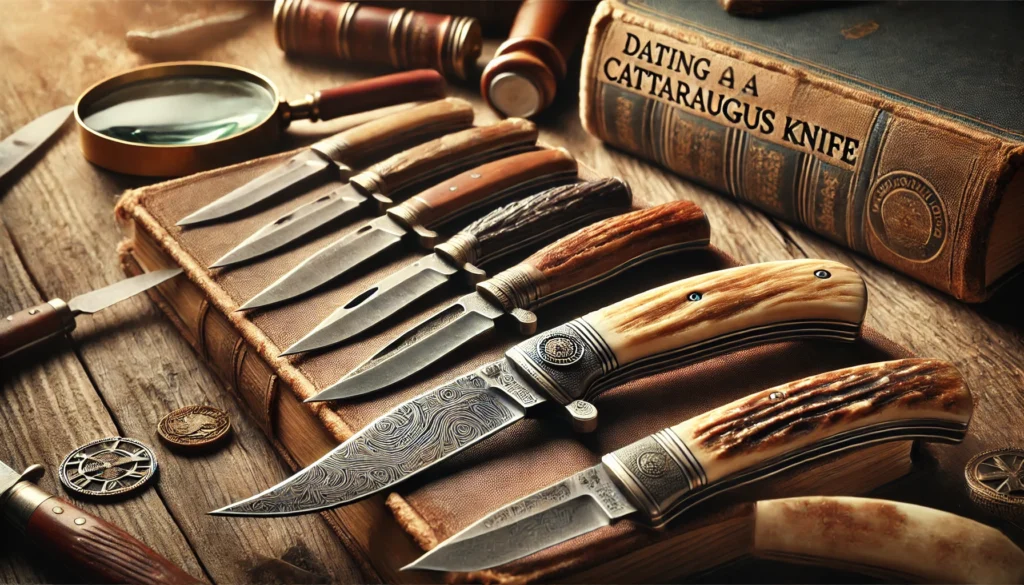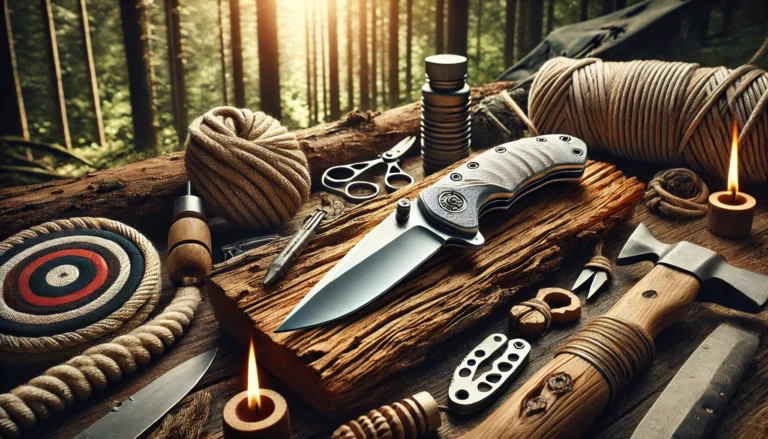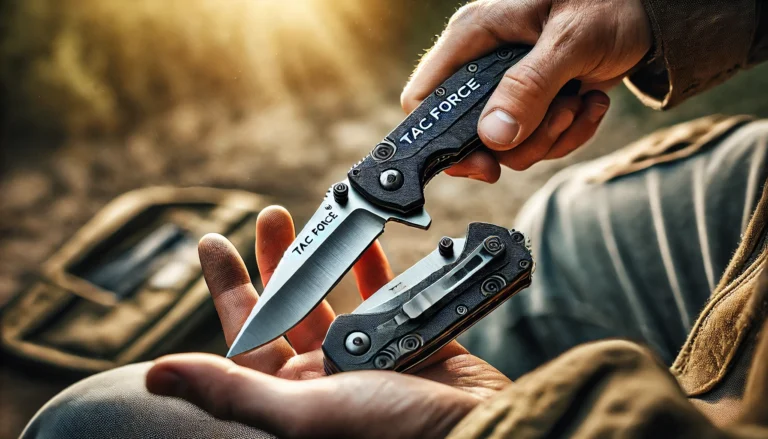
For knife collectors and historical enthusiasts, understanding the history of their cherished pieces is as fascinating as the knives themselves. This guide explores how to date a Cattaraugus knife, ensuring you can trace its lineage and appreciate its historical significance. By the end of this post, you’ll be armed with the knowledge to identify and date these remarkable blades accurately.
How to Date a Cattaraugus Knife? (Short Answer)
- Examine the Blade Stamp: Look for any stamps or markings on the blade. These often include the brand name and other identifying features.
- Check the Handle Material: Different periods used different materials. Wood, bone, and synthetic materials can give clues.
- Inspect the Rivets and Construction: Older knives may wear more and have different rivet styles compared to newer models.
- Research the Knife Model: Use available resources like catalogs and collector books to match your knife to specific years.
- Consult Experts or Forums: Join knife collector groups online for more insights and to verify your findings with other enthusiasts.
To date, a Cattaraugus knife starts by examining the tang stamp. The tang stamp often includes the manufacturer’s name and location, which can give clues about its age. Next, check the handle material; older knives might use bone or stag, while newer ones use synthetic materials. Also, look at the overall craftsmanship, as earlier knives tend to show more detailed handiwork. Lastly, consult collector guides or online resources for more specific dating information based on these characteristics.
Discovering Cattaraugus Cutlery Company
Cattaraugus Cutlery Company holds a special place in the annals of American knife-making history. Founded in 1886 by John Champlin and his son, Tint, the company was located in Little Valley, New York. The Champlins were pioneers in creating high-quality cutlery, and their dedication to craftsmanship set them apart. Understanding the origins of Cattaraugus knives is the first step in dating them, as it provides context for the knife’s unique features.
The Early Years
In the early years, Cattaraugus focused on producing pocket knives and fixed blades. These early models often featured the company’s distinctive tang stamps and blade etches. Knowing these early design elements can help you recognize knives from this period.
The Golden Era
The period from the late 1800s to the early 1900s is often considered Cattaraugus’ golden era. During this time, the company expanded its product line and established a reputation for quality. Collectors highly seek after knives from this era.
The Decline
By the mid-20th century, the demand for traditional knives began to decline, and Cattaraugus faced stiff competition from other manufacturers. The company eventually ceased operations in 1963, making Cattaraugus knives from the later years rarer and more valuable.
Identifying Tang Stamps
One of the most reliable ways to date a Cattaraugus knife is by examining the tang stamp. This small mark, usually found on the base of the blade, can provide valuable clues about the knife’s age.
Early Tang Stamps
In the early years, Cattaraugus used simple tang stamps that included the company name and location. These stamps were often straightforward, with minimal embellishments.
Mid-Era Tang Stamps
During its peak, Cattaraugus introduced more elaborate tang stamps. These often included additional information such as the patent date, model number, or even decorative elements. Recognizing these stamps can help you narrow down the knife’s production period.
Late Tang Stamps
In the later years, Cattaraugus simplified its tang stamps again. These stamps typically featured the company name and sometimes the model number. Knives with these stamps are more likely to be from the 1950s and early 1960s.
Decoding Blade Etches
Blade etches are another useful tool for dating Cattaraugus knives. These decorative markings were often added to the blade’s surface and can provide additional context for dating the knife.
Early Blade Etches
Blade etches were relatively simple in the early days. They often featured the company name or logo and were carved into the blade using basic techniques. Knives with these etches are likely from the late 1800s or early 1900s.
Mid-Era Blade Etches
During the golden era, Cattaraugus introduced more intricate blade etches. These often included detailed designs, model names, and additional information about the knife. Recognizing these etches can help you identify knives from this period.
Late Blade Etches
In the company’s final years, blade etches became less common. When they were used, they were often simpler and less detailed. Knives with these etches are likely from the 1950s or early 1960s.
Examining Handle Materials
The materials used for the handle can also provide valuable clues about a knife’s age. Cattaraugus used a variety of materials over the years, each with its unique characteristics.
Early Handle Materials
In the early years, Cattaraugus often used natural materials such as bone and wood for their handles. These materials were readily available and offered durability and aesthetic appeal. Knives with these handles are likely from the late 1800s or early 1900s.
Mid-Era Handle Materials
During its peak, Cattaraugus experimented with a wider range of materials, including synthetic options like celluloid and Bakelite. These materials allowed for greater creativity in design and were popular during the mid-20th century. Recognizing these handles can help you date knives from this period.
Late Handle Materials
In the later years, Cattaraugus continued to use synthetic materials but also returned to more traditional options like wood and bone. Knives with these handles are likely from the 1950s and early 1960s.
Assessing Blade Styles
The blade style can also provide valuable clues about a knife’s age. Cattaraugus produced a wide range of blade styles, each with unique characteristics.
Early Blade Styles
In the early years, Cattaraugus focused on producing traditional blade styles such as clip points, spear points, and drop points. These blades were designed for practical use and reflected the needs of the time. Knives with these blade styles are likely from the late 1800s or early 1900s.
Mid-Era Blade Styles
During its peak, Cattaraugus introduced more specialized blade styles such as hawkbills, sheepsfoot, and Wharncliffe blades. These styles allowed for greater versatility and were popular during the mid-20th century. Recognizing these blade styles can help you date knives from this period.
Late Blade Styles
In the later years, Cattaraugus returned to more traditional blade styles while continuing to produce some specialized options. Knives with these blade styles are likely from the 1950s and early 1960s.
Evaluating Overall Condition
The condition of a knife can also provide valuable clues about its age. While a well-preserved knife may look newer, signs of wear and tear can indicate a knife’s history and usage.
Early Knives
Early Cattaraugus knives often show significant signs of wear, including blade patina, handle cracks, and loose fittings. These signs of age can help you identify knives from the late 1800s or early 1900s.
Mid-Era Knives
Knives from the golden era may show moderate wear, with some signs of use, but they are generally well-preserved. These knives often have intact handles and blades with minimal corrosion.
Late Knives
Later, Cattaraugus knives are often in better condition, with less wear and tear. Although they may still show signs of age, they are generally more well-preserved than earlier models.
Consulting Experts and Resources
Sometimes, dating a Cattaraugus knife requires expert knowledge and access to specialized resources.
Knife Shows and Conventions
Attending knife shows and conventions can provide valuable opportunities to consult with experts and see a wide range of knives in person. These events often feature knowledgeable collectors and dealers who can offer insights into dating your knife.
Online Forums and Communities
Online forums and communities dedicated to knife collecting can also be valuable resources. Many experienced collectors are willing to share their knowledge and help you date your Cattaraugus knife.
Reference Books and Catalogs
Reference books and catalogs dedicated to Cattaraugus knives can provide detailed information about tang stamps, blade etches, handle materials, and more. These resources can be invaluable for identifying and dating your knife.
Conclusion:
Dating a Cattaraugus knife can be a rewarding experience for knife collectors and historical enthusiasts. By examining tang stamps, blade etches, handle materials, blade styles, and overall condition, you can uncover valuable clues about your knife’s age and history. Consulting experts and specialized resources can also provide useful insights. Remember, each Cattaraugus knife is a piece of history, and understanding its origins can enhance your appreciation for these remarkable blades.
FAQs
You can identify the era of your Cattaraugus knife by examining the complexity and details of the blade etch. Early knives from the late 1800s or early 1900s have simple etches, mid-era knives from the golden era have intricate designs, and late-era knives from the 1950s or early 1960s have simpler and less detailed etches.
In the early years, Cattaraugus used natural materials such as bone and wood for their knife handles. These materials were chosen for their durability and aesthetic appeal and can help identify knives from the late 1800s or early 1900s.
Yes, different blade styles can help date your Cattaraugus knife. Early knives featured traditional blade styles like clip points and spear points. Mid-era knives from the golden era introduced specialized styles such as hawkbills and sheepsfoot blades. Late-era knives returned to traditional styles but also included some specialized options.
Early Cattaraugus knives often show significant signs of wear, such as blade patina, handle cracks, and loose fittings. These signs of aging and usage can help identify knives from the late 1800s or early 1900s.
You can find experts at knife shows and conventions, where knowledgeable collectors and dealers offer insights. Online forums and communities dedicated to knife collecting are also valuable resources to consult with experienced collectors. Additionally, reference books and catalogs on Cattaraugus knives provide detailed information to help date your knife.






